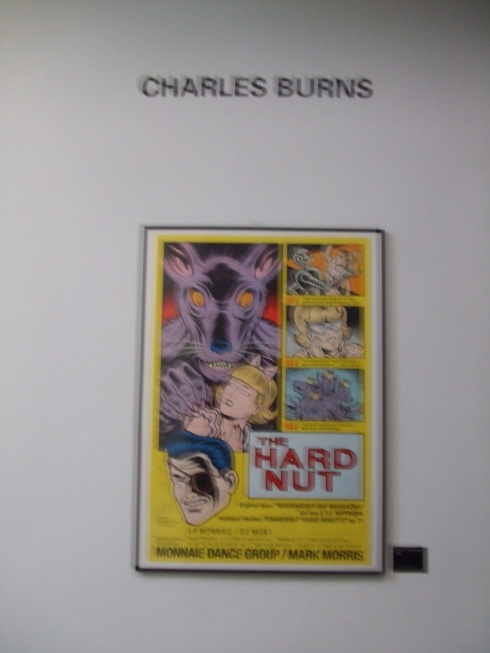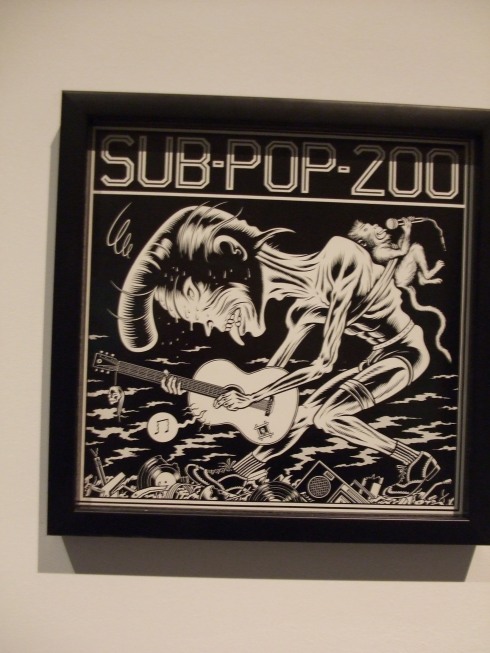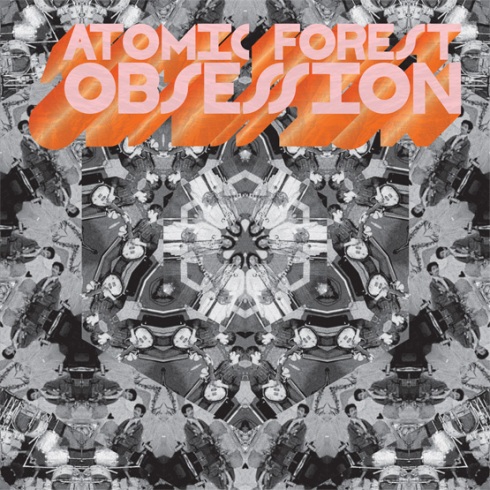Gilles Peterson Worldwide Vol.4 No.6 // DJ Nuts from Brasil by Gilles Peterson Worldwide on Mixcloud
Gilles Peterson Worldwide Vol.4 No.6 // DJ Nuts from Brasil,Et pour écouter tout cela, il suffit de cliquer sur le lien sous la photo, bonne écoute
21 Décje voyage en inde pour noël grâce a Egon Alapatt le Manager Général de Stones Throw et fondateur de Now-Again
19 DécTracklist:
1. Obsession ‘77 (Fast) 5:20
2. Locomotive Breath 3:34
3. Mary Long 3:17
4. Sunshine Day 4:28
5. I Saw Her Standing There 5:40
6. Obsession ‘77 (Slow) 3:17
7. Butterfly Version 1 3:28
8. Theme From The Godfather 4:35
9. .Windmills Of Your Mind 2:58
10. Theme From The Fox 4:50
11. Butterfly Version 2 3:30
Bonus Tracks:
12. Booboo Lullaby 6:38
13. Man, You’re Number One 4:15
14. Going Home To Nowhere 3:44
15. Jeff Beck Excerpt 1:59
16. Foxy Lady 7:02
The collected recordings (1973-1977) of India’s best-known psychedelic rock ensemble, and the story behind their genesis in an extensive booklet full of rare photographs and ephemera. Release Date: Jan. 24, 2012. Pre-sale SOON – exclusively at stonesthrow.com for now gain records
TÉHÉRAN MON AMOUR
19 Déc
Now-Again Records presents the Kourosh Yaghmaei anthology Back from the Brink – Pre-Revolution Psychedelic Rock from Iran: 1972-1979.
Golden Ring: Iranian Styled 60s Garage & Other Exotic Sounds
Various Artists – Raks Raks Raks –
27 Golden Garage Psych Nuggets From The Iranian 60s Scene
Pari Zangeneh – The Series Of Music For Young Adults: Iranian Folk Songs
Pomegranates – Persian Pop, Funk, Folk, and Psych of the 60s & 70s – 2010 – Finders Keepers
Persian Underground: Garage Rock, Beat and Psychedelic Sounds from The Iranian 60’s & 70’s
Demdike Stare ‘Irrational Advice’ [MODERN LOVE] – Demdike Stare have begun releasing a new series of EPs on Modern Love called Elemental. The series, comes in four installments: Chrysanthe, Violetta, Rose and Iris.
18 Décsteve reid bande encore
14 DécTRACKLISTING:
Genre: Jazz
1 Morning Prayer
2 Lyman Place
3 People Be Happy
4 Untitled
5 25th Street
6 The Sun Never Sets
At the start of « The Sun Never Sets », the last song of the six-piece set Live at the South Bank, drummer Steve Reid sounds tired. He lags slightly behind the flickering electronic phrases of collaborator Kieren Hebden, better known as Four Tet, like he’s forgotten the clip of the tune that opened their 2007 album, Tongues. It would be hard to blame Reid, after all; at this point, just 10 months before he died of throat cancer last year, the 65-year-old was an hour deep into a June 2009 performance with Reid and fierce Swedish saxophonist Mats Gustafsson in London’s Queen Elizabeth Hall. They’d been busy, too. Earlier, the trio had taken four of five numbers well past the 10-minute mark. The only relatively brief piece had been « Lyman Palace », for which Gustafsson finally stepped onto the stage and– with his deep, broad bellows– injected a ferocity that bordered on frightening. You’d be tired, too.
But Reid’s story has never really been a tale of quitting. A teenager drummer in New York, he famously gigged with James Brown and the Vandellas before serving a two-year prison sentence for his Vietnam evasion. He returned to the kit upon release, eventually forming his own group (with at least one really great album to their name) and working with legends spread across several different forms– R&B legend Dionne Warwick, astral jazz traveler Sun Ra and African icon, and iconoclast Fela Kuti. In 1986, he even added a touch of percussion to Miles Davis’ Tutu. But for a player who was drumming with the stars by the time he was 16, much of the success and steady work that might’ve seemed logical for Reid mostly proved elusive. Through the 1990s and into the first half of the last decade, his output could be described, at best, as a trickle. But that all changed when, as legend has it, Hebden watched Gustafsson perform at the Oslo Jazz Festival in 2004. He decided he needed a drummer and, more importantly, a collaborative partner. After Hebden, Reid’s trickle became something of a deluge. The two first played together in 2005, and Hebden played on parts of Reid’s fantastic record for Soul Jazz that year, Spirit Walk. They summarily released two albums, The Exchange Sessions Vols. 1 and 2, recorded in a single day at London’s Exchange Mastering Studios.
Hebden’s albums as Four Tet had often seemed about a sort of robotic composure, pairing an elegant sense of melody to a composer’s eye for development; these collaborations with Reid, though, showed a young musician interested in letting loose those fetters, in playing with more interest in the perfect personal musical moment than pristine dance-floor momentum. Reid and Hebden continued to flirt with flashes of brilliance on 2007’s Tongues and 2008’s NYC, but they never seemed to cash in on their true potential. Sometimes, it seemed, Hebden couldn’t push away from his compulsion to build big songs, no matter how hard Reid banged the drums at his back.
On South Bank– the most vital and essential document of Reid and Hebden’s five-year partnership– it feels clear that, at least onstage, they were finally able to go the distance. The invocation « Morning Prayer » opens slowly, circling in space with a meditative calm. For 17 minutes, the pair traces lines around the other’s rhythm, Hebden’s electronics and keys shaping a cradle for Reid’s busy tom-and-cymbal patter, and vice versa. Back in 2006, on Volume 1, « Morning Prayer » felt slight but suggestive, as if Reid and Hebden were only testing the water; here, they’re living in it. In London that night, Gustafsson was so mesmerized by the pair’s chemistry that he forgot to join until the piece was done.
When he finally enters, though, he fits readily, adding a strange new mix of aggression and soul to « Lyman Place ». He sounds like an air-raid siren but quotes Coltrane; Reid and Hebden respond in kind, their own treatment reinvigorated by a stranger who didn’t know its original bounds. « People Be Happy », originally heard on 2007’s Tongues, capitalizes on that openness, too, with the trio pushing the tune’s distinctive fragment of a melody into a strange, elliptical sphere. Gustafsson and Reid wind strands of sound through one another, while Hebden sits back, building a back-and-forth bed of sound upon which they both move. As accomplished with fierce, focused marches (« Untitled ») as they are with open-ended textural explorations (« 25th Street »), this one-time-only trio understood its own extremes– and how to navigate breathlessly, relentlessly, and brazenly between them.
As « The Sun Never Sets » progresses, Reid’s fatigue turns out to be only a passing notion. Just three minutes in, he’s forcing the rest of the squad to twist one of the most memorable melodies of his work with Hebden into unrecognizable patterns. He jumps from cymbals to kick drum, from toms to cymbals. Gustafsson broods, and Hebden wraps the theme in a fuselage of noise. They distend what seems like the end, stretching the coda into a slow exhalation. But as everyone else starts to fade, Reid remains, pounding his drums a little harder than you might expect after these nearly 90 bustling minutes, like he wants to keep going.
le label ibérique VAMPISOUL publie cette formidable compilation
14 DécIt may seem hard to believe now, with the Islamic Republic of Iran swathed in controversial breaches of human rights and nonsensical nuclear issues, but a little over 30 years ago it was all glitz and glamour, rock and roll. The shah of Iran promoted modernization to the detriment of Persian culture and most Iranians loathed the stoic king by the end of his reign. Centuries of monarchist rule gave way to a staunch Islamist regime during the populist Iranian Revolution of 1979. The new Iranian government sought to eradicate any remnants of the imperialist monarchy and « having fun » was banned entirely. Music’s controversial status within Islam meant that the Persian pop industry was incongruous with Iran’s new and heavy-handed rulers. All of Iran’s record labels were forcibly shut down, the entire broadcasting industry was Islamicized, and a fearful population burned their records, buried their books and complied, at least on the surface, with the Islamic regime’s new (and very boring) rules and regulations. Rangarang is a compilation of forgotten jewels from pre-revolutionary Iran. These songs tell the stories of an artisan community that flourished during the 1960s and 1970s before vanishing into oblivion. The pop stars who stayed in Iran were summonsed to the revolutionary court and forced to sign a declaration promising to abandon their careers and never perform again. By the time an exilic music industry had been established in Los Angeles, where many musicians settled after fleeing the chaotic disarray of post-revolutionary war-torn Iran, the beats and melodies of the monarchist era had given way to the synthesizers of the 1980s and Iranian pop music would never be the same again. The range of the tracks included on Rangarang is astonishing, from funky workouts and soulful pop to jazzy grooves and yearning ballads, all wonderfully and imaginatively produced and arranged, giving shape to truly popular music.
Tracks list
1. Aashianeh (Fereidoon Farrokhzad)
2. Do Parandeh (Neli)
3. Dokhtare Shab (Mehrpouya)
4. Moama (Leila Forouhar)
5. Gharibooneh (Afshin Moghaddam)
6. Ey Vallah (Pooran Featuring Manouchehr Sakhaei)
7. Omadi (Shohreh)
8. Gheseye Rooze Siah (Habib)
9. Shahre Paiz (Pooran)
10. Khaar (Kourosh Yaghmaei)
11. Asemoni (Hamid Shabkhiz)
12. Age Bemooni (Googoosh)
13. Lanehe Moor (Simin Ghanem)
14. Viroon Beshi Ay Del (Pooran)
15. Daad Az In Del (Dariush)
16. Kalaghaye Khabarchin (Leila Forouhar)
17. Tang Ast Dilam (Ahmad Zahir)
18. Age Mishod Che Mishod (Googoosh)
19. Bi To Man (Habib)
20. Goftam Be Chashm (Hassan Khayatbashi)
21. Bikasi (Beti)
22. Hamparvaz (Leila Forouhar)
23. Negaham Kon (Aref Featuring Hayedeh)
24. Tarsam Az Eshgh (Giti)
25. Abre Payizi (Simin Ghanem)
26. Asheghi Doroughe (Hamid Shabkhi
27. Yek Nafas Atre To Bas (Leila Forouhar)
28. Hobab (Neli)
Released by: vampisoul
Release/catalogue number: vampi138cd
Release date: Dec 3, 2011
les mémoires de GIL SCOTT HERON a paraître dans la langue de Shakespeare
12 DécJe ne suis pas surpris par son décès, tant Gil Scott Heron aura fumé la vie par les deux bouts. Il suffit d’écouter sa voix éraillée, borderline sur le fil du rasoir sur son dernier album, pour se dire que la fin était bien proche, inévitable, rongé par les drogues et le HIV, il était en bout de course. Il aura été un guide pour moi, une porte d’entrée vers la great black musique, à l’époque (au début des 90′s) j’étais encore sous perfusion des inrocks, et donc pas très ouvert musicalement.
UN EXTRAIT DU LIVRE ICI:
Different dates on the tour were memorable for different reasons.
Some days I took notes, though most of those notes seem to have
been done as a joke, some kind of acrobatic way of pulling my own
leg. There were either a few lines written before the show along
with whatever expenses I needed to note, or, after the concert, in
the early a.m., there was a separate page or two that described
something that happened or that I felt during the day or evening.
There was rarely both, rarely an occasion when I wrote something
before and after a show. December 8, 1980 in Oakland was a
before-and-after day. I still remember the after feelings now.
I rarely missed things Stevie said to me. But when I saw
him at the bottom of the backstage stairs at the arena in Oakland,
I thought I must have misheard him. Maybe it was the shock at
what he had said. Maybe I hadn’t missed what he said and just
thought I did. It was something I didn’t want to hear.
But no, I must have mistaken Stevie for sure.
“What did you say?” I asked him, trying to get above the
noise.
“I said some psycho, some crazy person, shot John Lennon!”
Stevie said. “And I’m wondering how to handle it.”
the last holiday
I am not so silly or naive as to suspect that there is an ultimate
evil. But the death of a good man, so rare as to be nearly
extinct, is a thorough tragedy. And what do you say about it to
seventeen thousand people who have come out to see you and
enjoy themselves?
I got that same feeling I’d felt when I heard that Dr. King or
someone else was killed; that sense of a certain part of you being
drained away, a loss of self. There were certain events in your
life that had such historical significance that you were supposed
to remember the circumstances under which you received the
news for the rest of your life. That was probably what some section
of humanity used to illustrate man’s superiority over other
animals: “memories of miseries that memorialize.”
Having those memories was like turning down the corner
of a page in your life’s book. But maybe animals turned down
corners of pages, too. They might not choose the date of the
death of John Lennon to see as a date of loss and mourning,
they would be more likely to remember the date the Ringling
Brothers died or the day the woman from Born Free was born.
I was sure they talked about important things. I didn’t have
the dialogue down pat, but I could picture a conversation between
two lions on a late-night walk across the savannah.
“Yeah, that’s where it was, man,” one of them says. “Right
over there by the watering hole. A big mean-looking thing with
sharp teeth and the strongest grip you ever heard of. The gorilla
called it an animal trap. Man, that thing grabbed Freddy
Leopard and held him for hours. The gorilla got Freddy loose
but his leg was all fucked up and he’s still walking with a limp.”
gil scott-heron
Just exactly what did those recollections, those dog-eared
pages, prove? That you were connected to the human race? It
couldn’t be. Because if so, people born since then, who weren’t
around then, couldn’t be connected. That’s why there were history
books and parents and other folks to tell you what happened
before you got here.
And why did you need to remember those things? Most
of them were about someone being killed or assassinated. You
could almost feel as though you needed an alibi: “Where were
you the day that such-and-such a person was murdered?” They
were pages in history books, however. I didn’t know why. I didn’t
know what it proved. That you were connected to the human
race? They were usually the least human things you could imagine.
Unnatural disasters.
I always knew where I’d been. I was in last period history
class at DeWitt Clinton High School when the principal announced
from the bottom of an empty barrel: “Ladies and gentlemen, I
regret to inform you that your president is dead.” He was talking
about John Kennedy, shot to death by someone in Dallas.
I was in the little theatre at Lincoln when a guy everyone
called “the Beast” had thrown open a rear door and shouted,
“The Reverend Dr. Martin Luther King has been shot and killed
in Memphis, Tennessee.”
I was in my bedroom on West 17th Street when man first
reached the moon and I had written a poem called “Whitey on
the Moon” that very night (for which my mother had come up
with the punch line: “We’re gonnna send these doctor bills air
mail special to Whitey on the moon”).
une chanson écrite pour sa fille
je recommande chaudement les disques du label Thaïlandais Zudrangma Records en cheville avec Light In The Attic Records ,mais aussi avec soundway et finders keepers records.
11 Déc
my personal choice:
THAI? DAI! THE HEAVIER SOUND OF THE LUKTHUNG UNDERGROUND(finders keepers)
THE SOUND OF SIAM Leftfield Luk Thung, Jazz and Molam from Thailand 1964 -1975 (soundway records)
et chez ZUDRANGMA RECORDS:
Thai Funk: ZudRangMa Vol. 1
Luk Thung! The Roots Of Thai Funk: ZudRangMa Vol. 3
Thai Funk: ZudRangMa Vol. 2
et vous recommande de faire un tour sur leur site il y a plein de 45t etc























